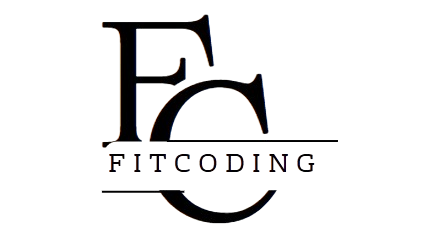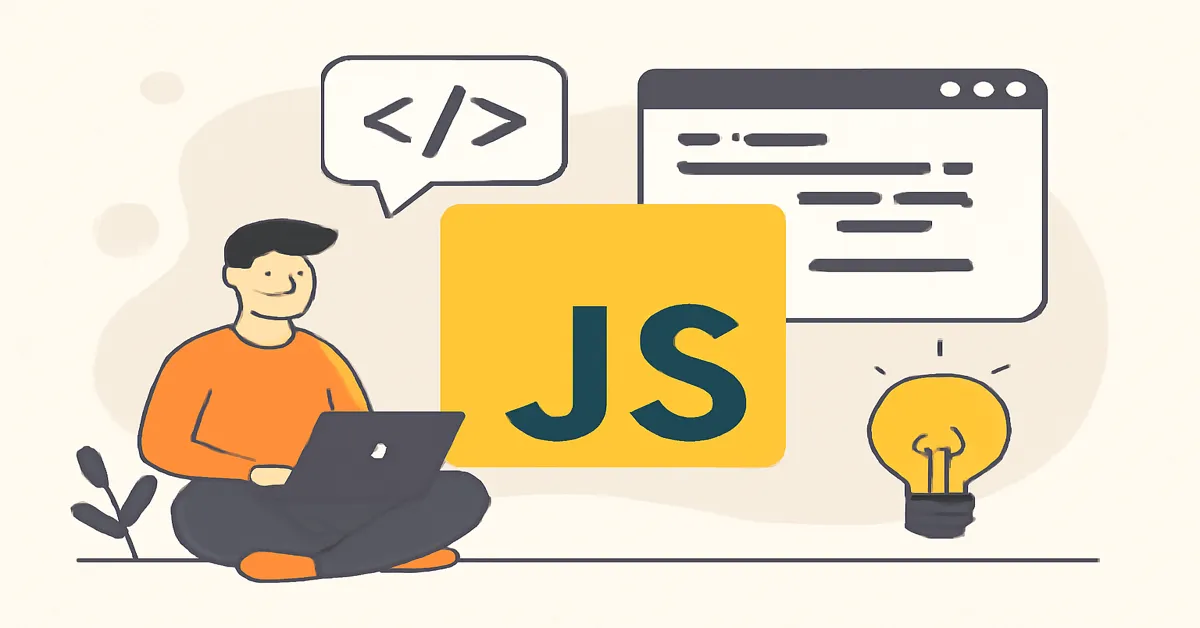When it comes to web development, JavaScript is one of the most fundamental and widely-used programming languages. Whether you’re building interactive websites, dynamic user interfaces, or even mobile applications, JavaScript is a language that you will almost certainly encounter. If you’re just starting your journey in programming, understanding Java-Script is a critical step toward mastering modern web development.
In this beginner’s guide, we’ll break down what Java-Script is, how it works, and why it’s so crucial for creating dynamic web pages. You’ll also learn about the basic syntax, core concepts, and common use cases of Java-Script to set you on the right path for further learning and exploration.
1. What is JavaScript?
At its core, Java-Script is a high-level, interpreted programming language that is primarily used to create dynamic and interactive effects on web pages. It was originally developed by Brendan Eich in 1995 as a way to add interactivity to web pages that were traditionally static. Since then, it has become an essential part of the web development stack, alongside HTML and CSS, and is used in virtually every modern website.
JavaScript is primarily a client-side language, meaning it runs in the user’s web browser rather than on the web server. This allows it to manipulate the content and behavior of a webpage dynamically without requiring a page reload. In recent years, Java-Script has evolved and can now be used on the server-side as well, thanks to frameworks like Node.js.
2. Why is JavaScript Important?
JavaScript is an essential tool for web developers. Its significance in the modern web development process cannot be overstated. Here are a few reasons why Java-Script is so important:
1. Enhances User Experience
JavaScript enables interactive features such as form validation, animations, and real-time updates on web pages. This makes websites more engaging and interactive, providing a better experience for users. For example, Java-Script powers elements like dropdown menus, sliders, pop-up windows, and dynamically changing content.
2. The Backbone of Dynamic Websites
Without JavaScript, websites would remain static. Java-Script allows web developers to build dynamic websites that respond to user interactions. For instance, a search bar that provides real-time suggestions as you type or a live chat feature that connects you to customer support.
3. Widespread Adoption and Versatility
JavaScript is supported by all modern web browsers, including Chrome, Firefox, Safari, and Edge. Because it’s so widely used, developers can rely on it for various purposes, from basic website interactivity to building full-fledged web applications. Java-Script is not limited to just the web; it is also used in mobile development (using React Native) and even in desktop application development (using Electron).
4. Continuous Growth and Community Support
JavaScript is constantly evolving with new features and updates. It has a large and active community that continuously builds libraries and frameworks (e.g., React, Vue.js, Angular) to simplify development. This community-driven ecosystem ensures that Java-Script remains at the forefront of web development.
3. How JavaScript Works
To understand how JavaScript works, you need to learn about the Java-Script engine and how it runs your code. Here’s a simple explanation of the process:
1. JavaScript Engine
When you write JavaScript code in a web page, the browser’s Java-Script engine executes it. The engine reads the code and translates it into machine code that the computer can understand. Different browsers have different JavaScript engines; for example, Chrome uses V8, while Firefox uses SpiderMonkey.
2. Browser Environment
JavaScript operates in the browser environment and interacts with the Document Object Model (DOM). The DOM represents the structure of the web page, and Java-Script can modify it in real time. For example, it can add, remove, or modify HTML elements and CSS styles dynamically.
3. Event-Driven Programming
JavaScript is event-driven, meaning it reacts to user interactions such as clicks, keyboard input, mouse movements, and page loading. The language relies heavily on event listeners to respond to these interactions, allowing developers to write scripts that react when the user takes specific actions.
4. Basic JavaScript Syntax and Concepts
If you’re just getting started with Java-Script, understanding the basic syntax and key concepts is essential. Here are some of the fundamental building blocks of Java-Script:
1. Variables
Variables are used to store data that can be accessed and modified throughout your script. In JavaScript, you can declare variables using var, let, or const.
- let and const are block-scoped, meaning they are limited to the block of code in which they are declared.
- var is function-scoped and should generally be avoided in modern Java-Script.
Example:
javascriptCopylet name = 'John'; // let for variables that will change
const age = 30; // const for constants that don't change
2. Data Types
JavaScript has several primitive data types:
- String: Text values, e.g.,
"Hello, World!" - Number: Integer or floating-point numbers, e.g.,
42,3.14 - Boolean: True or false, e.g.,
true,false - Null: Represents no value or an empty object, e.g.,
null - Undefined: Variable has been declared but not yet assigned a value.
- Symbol: Represents a unique and immutable value (used for creating unique object properties).
Example:
javascriptCopylet name = "Alice"; // String
let age = 25; // Number
let isActive = true; // Boolean
let user = null; // Null
3. Functions
Functions allow you to group code into reusable blocks. Functions in Java-Script can take parameters and return values. Here’s an example of a basic function:
javascriptCopyfunction greet(name) {
console.log("Hello, " + name);
}
greet("John"); // Outputs: Hello, John
4. Loops and Conditionals
Loops and conditionals help control the flow of execution in JavaScript.
- if-else statements: Used to execute code based on certain conditions.
- for loop: Used for repeating a block of code a specified number of times.
- while loop: Used for executing code while a condition is true.
Example:
javascriptCopy// If-else statement
if (age > 18) {
console.log("You are an adult.");
} else {
console.log("You are a minor.");
}
// For loop
for (let i = 0; i < 5; i++) {
console.log(i); // Outputs numbers 0 through 4
}
5. Objects and Arrays
JavaScript is an object-oriented language, meaning it uses objects to store data and organize functionality. An object is a collection of key-value pairs, while an array is a list of values.
Example:
javascriptCopy// Object
let person = {
name: "Alice",
age: 25,
greet: function() {
console.log("Hello, " + this.name);
}
};
person.greet(); // Outputs: Hello, Alice
// Array
let numbers = [1, 2, 3, 4, 5];
console.log(numbers[0]); // Outputs: 1
5. Common JavaScript Use Cases
JavaScript can be used in various ways to enhance the functionality of websites and applications. Here are some of the most common use cases:
1. DOM Manipulation
JavaScript allows you to interact with the DOM, which is the structure of your webpage. You can use JavaScript to modify HTML elements, change styles, and dynamically add content.
Example:
javascriptCopydocument.getElementById("myElement").innerHTML = "Hello, World!";
2. Event Handling
JavaScript can listen for and respond to user actions like clicks, keyboard input, and form submissions.
Example:
javascriptCopydocument.getElementById("myButton").addEventListener("click", function() {
alert("Button clicked!");
});
3. Form Validation
One of the most common uses of JavaScript is form validation. Before submitting form data to a server, JavaScript can check if the user has entered the required information.
Example:
javascriptCopyfunction validateForm() {
let name = document.getElementById("name").value;
if (name === "") {
alert("Name is required");
return false;
}
return true;
}
4. Asynchronous Programming (AJAX)
JavaScript can be used to send and receive data from the server asynchronously using AJAX (Asynchronous JavaScript and XML). This allows web pages to update without reloading the entire page.
Example:
javascriptCopylet xhr = new XMLHttpRequest();
xhr.open("GET", "data.json", true);
xhr.onload = function() {
if (xhr.status == 200) {
console.log(JSON.parse(xhr.responseText));
}
};
xhr.send();
6. Tools and Libraries for JavaScript
As you dive deeper into Java-Script development, you’ll encounter various tools and libraries that simplify your work. Here are a few of the most popular:
1. Frameworks
Java-Script frameworks provide pre-built structures for building complex web applications. Some of the most popular frameworks include:
- React: A library for building user interfaces, often used for single-page applications (SPAs).
- Vue.js: A progressive framework for building user interfaces.
- Angular: A full-fledged framework for building dynamic web applications.
2. Libraries
JavaScript libraries are collections of pre-written code that help with common tasks. Some well-known libraries include:
- jQuery: Simplifies DOM manipulation and event handling.
- D3.js: Used for data visualization.
7. Conclusion
JavaScript is an essential language for modern web development. From interactive elements to powerful web applications, Java-Script enables developers to create engaging and dynamic websites. As you begin your journey with Java-Script, understanding its core concepts—like variables, functions, loops, and DOM manipulation—will provide a solid foundation for your development skills.
With the right tools and a deeper understanding of JavaScript’s capabilities, you can start building more advanced applications, automating workflows, and even working with popular frameworks. JavaScript’s widespread use and ever-expanding ecosystem make it an indispensable skill for any developer, and it will remain a vital part of the web development landscape for the foreseeable future.
As you continue learning, remember that JavaScript is more than just a programming language—it’s a bridge to interactive, data-driven, and user-centered web development. The possibilities are endless, and the journey has only just begun.
Read:
The 10 Best Programming Books for Beginners: Your Roadmap to Learning Code
FAQs
1. What is JavaScript used for?
JavaScript is primarily used for adding interactivity to websites. It allows developers to create dynamic web pages by modifying HTML and CSS, handling events, and communicating with servers asynchronously. JavaScript powers features like form validation, animations, and interactive maps, and it’s also used in web application development.
2. How does JavaScript differ from HTML and CSS?
JavaScript is a programming language used to create dynamic functionality on a webpage, while HTML is a markup language for structuring content, and CSS is used for styling and layout. JavaScript works alongside HTML and CSS to bring interactivity and real-time updates to the webpage, allowing user-driven changes without needing to reload the page.
3. Is JavaScript difficult for beginners to learn?
JavaScript can be challenging for beginners due to its asynchronous nature and complex features like closures and the event loop. However, with consistent practice and by breaking down the concepts into manageable steps, learning JavaScript can be very rewarding. It’s widely regarded as an essential language for web development, with many resources available for beginners.
4. What are the main features of JavaScript?
Key features of JavaScript include:
- Event-driven programming: Reacting to user actions like clicks and key presses.
- Dynamic typing: Variables don’t have to be declared with a type.
- First-class functions: Functions can be assigned to variables and passed as arguments.
- Cross-platform: JavaScript can be used in both client-side (in browsers) and server-side (via Node.js) environments.
5. What tools and frameworks should I use to learn JavaScript?
To start learning JavaScript, you can use any basic text editor (such as Visual Studio Code or Sublime Text) and a web browser. As you progress, you can explore libraries and frameworks like React, Vue.js, and Angular for front-end development, or Node.js for server-side development. Tools like jQuery can also simplify DOM manipulation for beginners.











